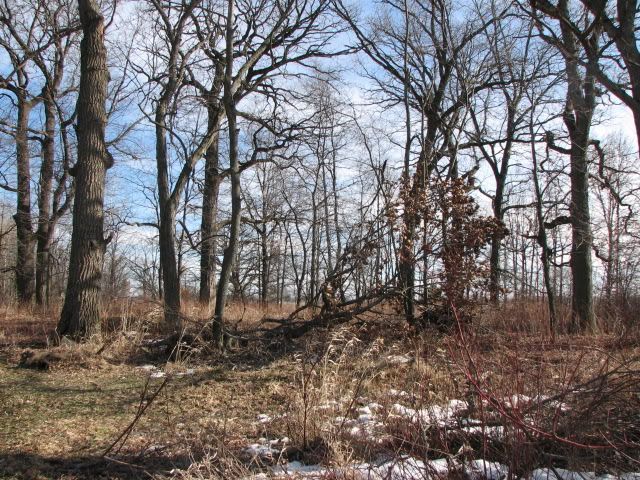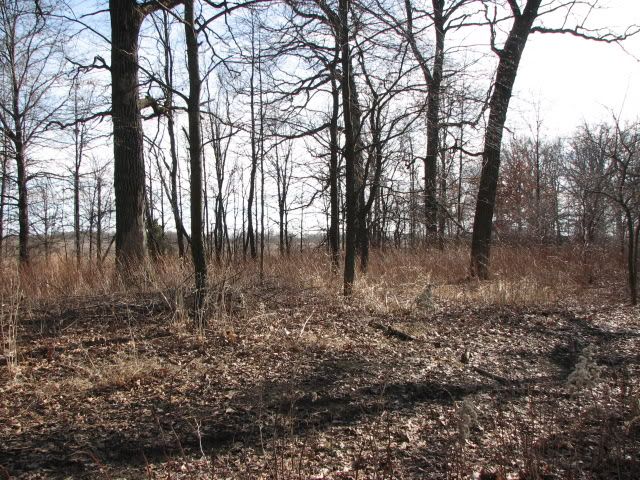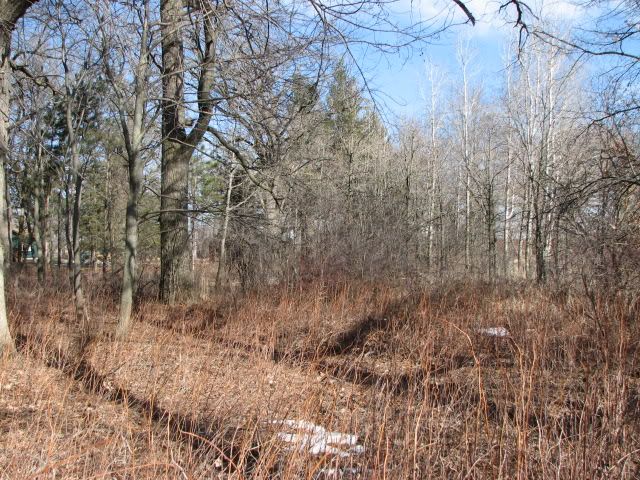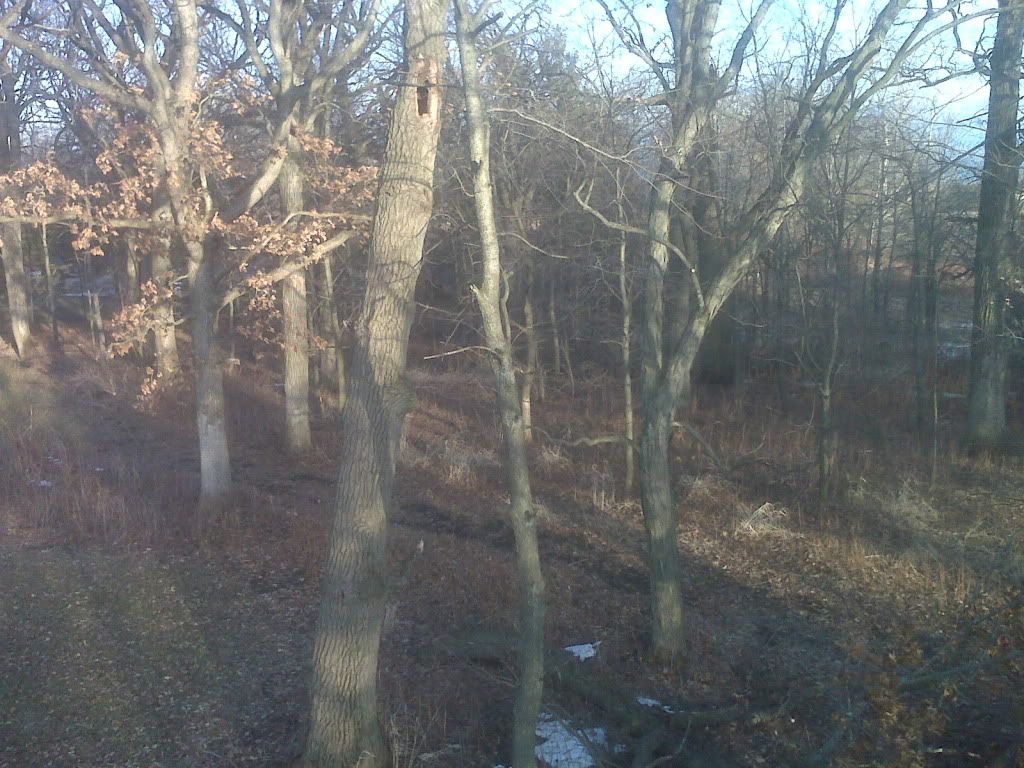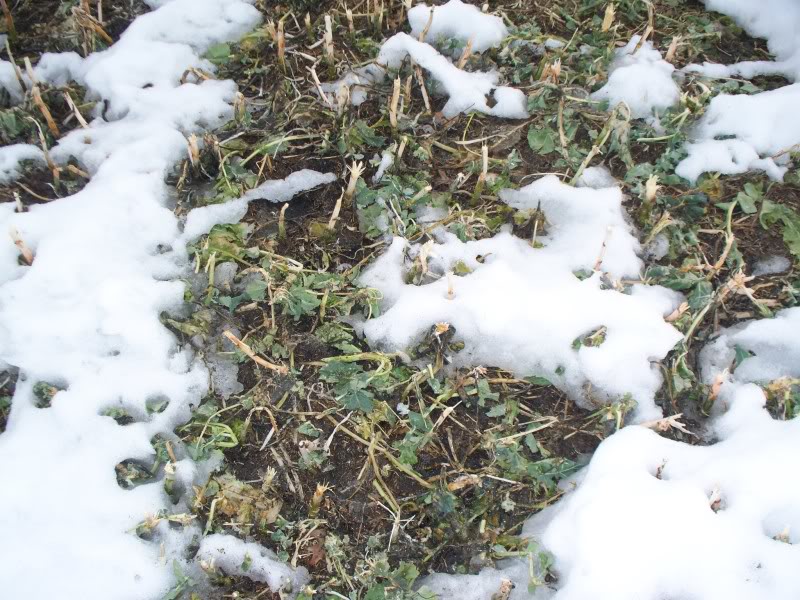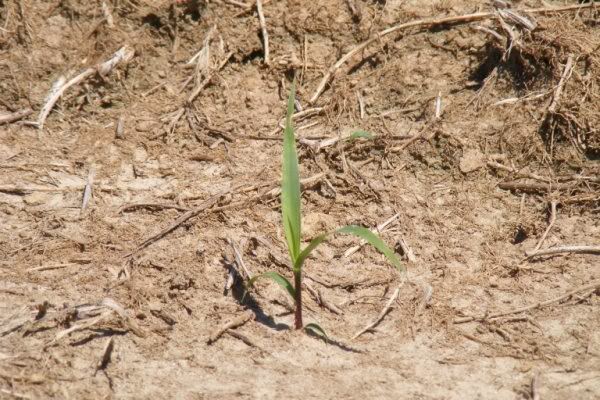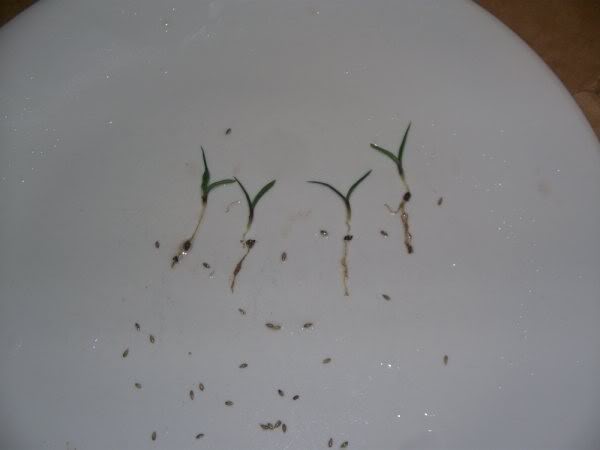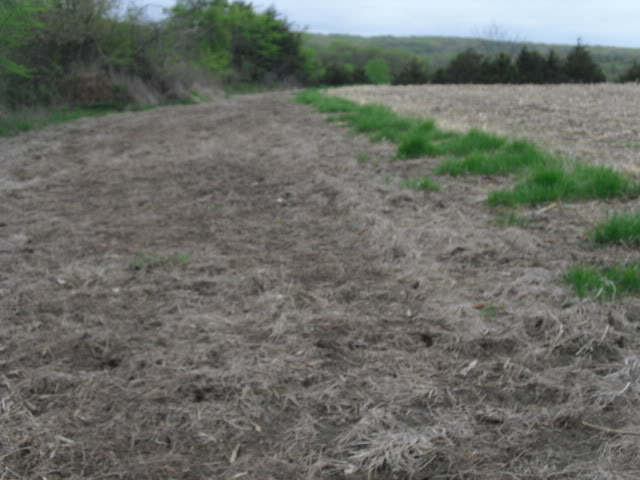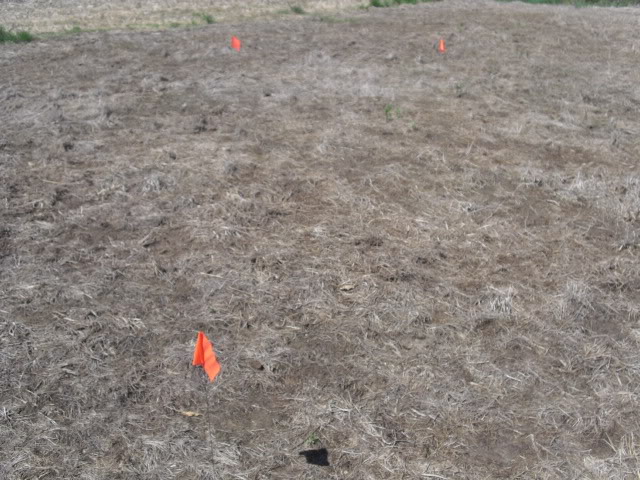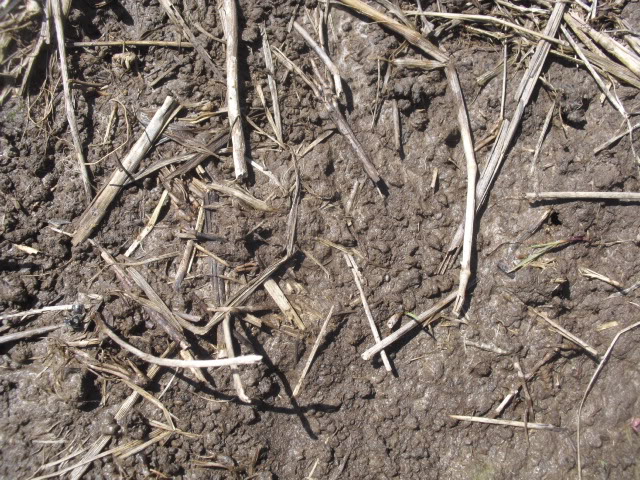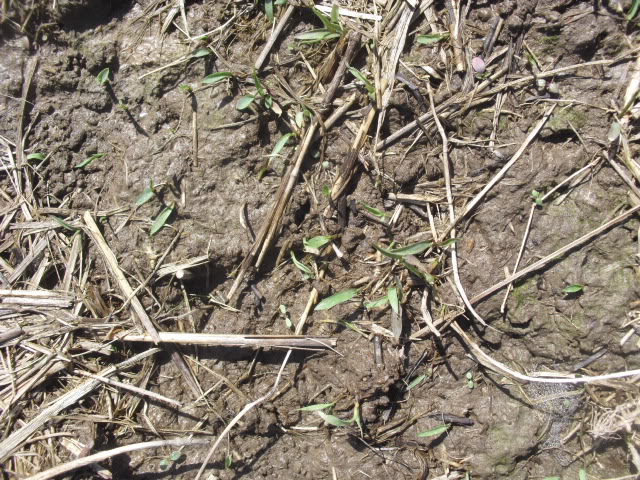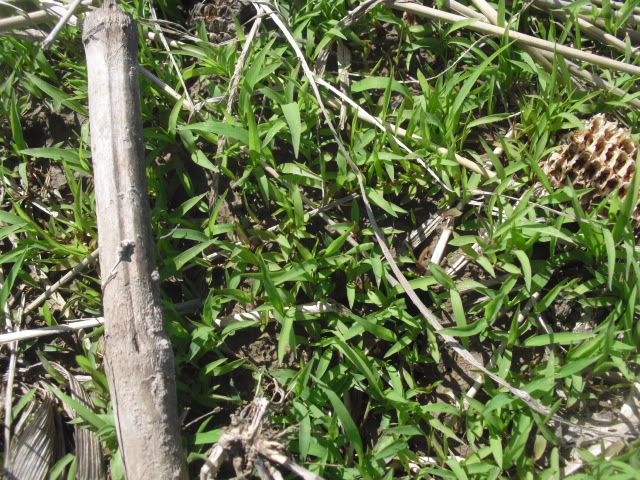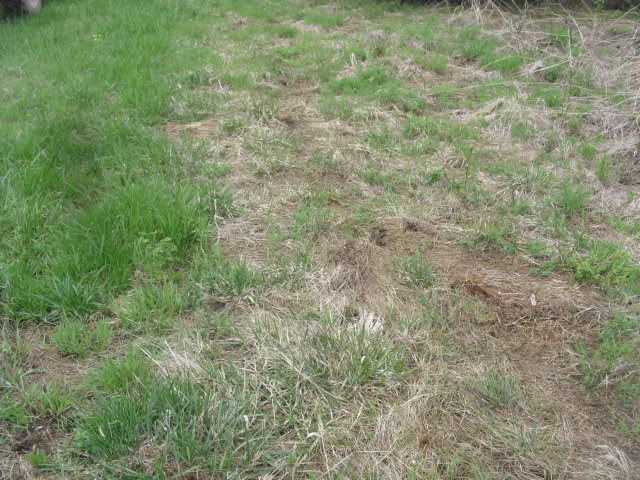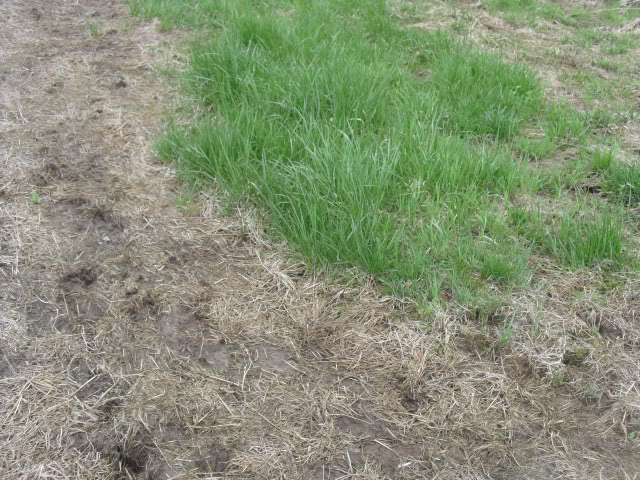Alpha Doe or Lickcreek, do you have any SG seedlings coming up yet?? I have some seedlings coming up that I think might be CIR SG and wanted to see what the experts out there all think. It's still hard to tell because they are only about 1/2 to 3/4 inches tall. Once they get 2 to 3 inches tall, I think I will be able to positively identify them because if you looke closely, they start to look more distinctly different from other weeds such as foxtail at that height. I will send pics to Lickcreek to post here. In one pic you will seed 4 seedlings on a plate that I think might be CIR SG. It's hard to tell in the pic, but they do have the purpleish color at the bottom of the "stalks". The seeds on the plate are some leftover CIR SG that were planted. The seeds on the seedlings look a bit bigger, but I think that might be from swelling up before germination?? In another pic you will seed a CIR SG seedling that is about 2-3" tall that was in last year's CIR SG plot. Once they reach that height, I think I can positively identify switch seedlings in the field.
The field where this years CIR SG was planted was mowed and sprayed with gly late last summer and then I broadcasted dwarf essex rape seed in for a fall/winter plot. Now I wish I had never done that. In one picture you will see there was a lot of brassica leaves and stems left after winter because we had so much standing corn and rape in our food plots this winter, and our neighbor had tons of standing corn that he could not get harvested last fall, so the deer had all kinds of food and never cleaned up this dwarf essex rape like they normally would. I wanted to frost seed the CIR but with all the "trash" left I was worried about the rape leaves not allowing the SG to sprout properly and I was also concerned about the allelopathic effects of the brassicas. After talking with several experts, I decided it would be best to till the top few inches with our 6 ft tractor tiller and use some residual herbicide to control all the sprouting weeds. After tilling I cutlipacked the ground, broadcast the seed and repacked. That was planted on March 27. I think tilling the ground causes the CIR SG to germinate earlier too because the ground is pretty much bare and heats up much faster than if it were just frost seeded into killed sod. This is also in a south facing hillside, which heats the ground faster too. Last year our CIR came up some time shortly after May 11th (which was the day we sprayed the field with gly), but with this year's extremely warmer than normal weather, I wonder if it's possible this is CIR coming up already. Last year's CIR is up 4" or so from the bases of the clumps. I was still hoping to spray this year's seeding with gly, but it looks like I won't be able to do that anymore now. Sorry, I don't have any pics of what the field looks like now.
<!-- / message -->


